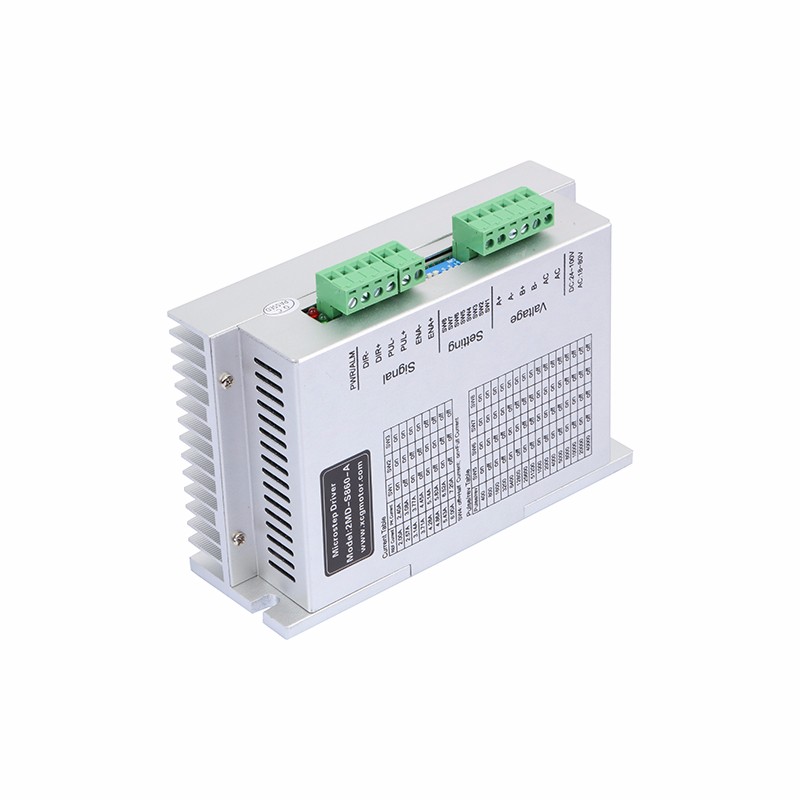Source:Industry News Release time:2022-03-09 Clicks: Popular:Reduction motor manufacturer

The speed of the stepper servo motor depends on the pulse frequency, the number of rotor teeth and the number of beats. Its angular velocity is proportional to the pulse frequency and synchronized with the pulse time. Therefore, when the number of rotor teeth and the number of operating beats are constant, the required rotation speed can be obtained by controlling the pulse frequency. Since the stepper motor starts with its synchronous torque, in order not to lose step, the starting frequency is not high. Especially as the power increases, the rotor diameter increases, the inertia increases, and the difference between the starting frequency and the maximum operating frequency may be as much as 10 times.
In order to give full play to the rapid performance of the motor, the motor is usually started at a frequency lower than the starting frequency, and then the pulse frequency is gradually increased until the required rotation speed is reached. In order to ensure the positioning accuracy of the motor, the motor must gradually reduce the pulse frequency from the highest speed to a speed that can be stopped (equal to or slightly greater than the starting speed) before stopping. Therefore, when a stepper motor drives a load to move a certain distance at high speed and position it accurately, it should generally include five stages: "start-acceleration-high-speed operation (constant speed)-deceleration-stop", and the speed characteristics are usually trapezoidal. If the distance is short, it is a triangular velocity characteristic.
The biggest feature that distinguishes the stepper motor from other control motors is that it can accept digital control signals (electrical pulse signals) and convert them into corresponding angular displacement or linear displacement, so it is an actuator that completes digital conversion.
It can also perform open-loop position control, and input pulse signals to obtain specified position increments. Compared with traditional DC servo systems, the cost of this incremental position control system is significantly reduced and almost no system adjustments are required.
Recommended reading
Solution to sudden failure of reduction motor
Introduction to the advantages and disadvantages of three different stepping motor control methods
Related Information
Speed control device
2021-01-13Stepper motor
2021-04-14CGF-090L1-10-P2
2020-12-21CGXK060
2021-01-13CGXK142
2021-01-13Stepper motor
2021-04-14Governor
2021-04-17CGX142
2021-01-13Planetary reducer
2021-04-15Planetary reducer
2021-04-15CGXK115
2021-01-13CGXZK142
2021-01-13CGX042
2021-01-13Rod motor
2021-04-17CGXK042
2021-01-13A brief introduction to RV geared motors
2022-08-24Briefly describe the principles and uses of stepper motors
2022-02-26Introduction to cylindrical gear reduction motor
2022-08-24The difference between reduction motor and ordinary motor
2022-08-29Reduction motor manufacturers introduce the product applications of reduction motors
2022-09-13Analysis of stepper motor driver
2022-07-06Summary of common sense about geared motors in life
2022-07-27What are the characteristics of stepper motors?
2022-07-04Maintenance precautions during the running-in period of the reducer
2022-12-10Analyze the speed characteristics of stepper motors
2022-02-26The steps, methods and application process of stepper motor driver to realize drive control
2022-05-27Reduction motor selection analysis
2022-08-13What are the types and functions of common reduction motors?
2022-07-20Analysis of shaft breakage problem of right-angle planetary reducer
2022-10-11Solution to sudden failure of reduction motor
2022-09-07